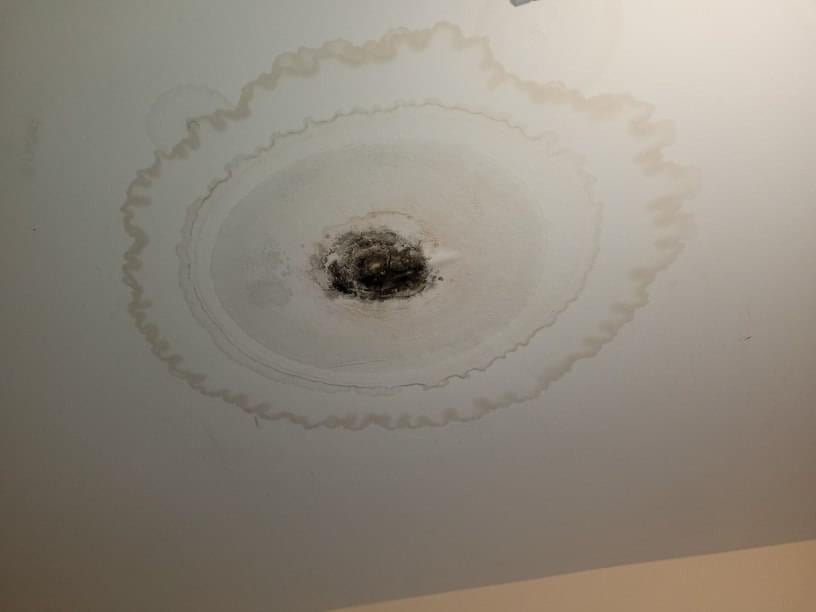The author is making a number of great pointers about Finding hidden leaks in general in this great article below.

Early detection of dripping water lines can mitigate a possible catastrophe. Some little water leaks may not be visible.
1. Check Out the Water Meter
Every home has a water meter. Examining it is a surefire manner in which helps you find leakages. For beginners, switch off all the water resources. Ensure no person will flush, utilize the tap, shower, run the washing device or dishwashing machine. From there, go to the meter as well as watch if it will transform. Since no person is using it, there must be no motions. If it relocates, that shows a fast-moving leak. If you discover no changes, wait a hr or 2 as well as inspect back once again. This implies you might have a slow-moving leak that might also be underground.
2. Inspect Water Intake
Analyze your water costs and also track your water usage. As the one paying it, you should notice if there are any kind of discrepancies. If you identify sudden changes, despite your intake coinciding, it suggests that you have leaks in your plumbing system. Keep in mind, your water costs need to fall under the exact same array each month. An abrupt spike in your costs suggests a fast-moving leakage.
A constant increase every month, even with the very same practices, reveals you have a sluggish leak that's additionally gradually escalating. Call a plumber to extensively check your residential property, specifically if you feel a warm location on your floor with piping underneath.
3. Do a Food Coloring Test
When it comes to water consumption, 30% comes from commodes. If the color somehow infiltrates your dish throughout that time without flushing, there's a leakage in between the container as well as dish.
4. Asses Outside Lines
Don't forget to inspect your outside water lines too. Must water leak out of the connection, you have a loose rubber gasket. One small leak can lose tons of water and also surge your water expense.
5. Check and Evaluate the Scenario
Home owners must make it a behavior to check under the sink counters and also even inside cupboards for any bad odor or mold development. These 2 warnings show a leakage so punctual interest is needed. Doing routine evaluations, even bi-annually, can conserve you from a significant issue.
Check for stainings as well as compromising as the majority of pipelines and also home appliances have a life span. If you suspect dripping water lines in your plumbing system, do not wait for it to escalate.
Early detection of dripping water lines can alleviate a potential disaster. Some small water leaks might not be visible. Examining it is a guaranteed means that assists you find leaks. One little leak can lose lots of water and also surge your water costs.
If you suspect leaking water lines in your plumbing system, don't wait for it to escalate.
How to Know If Your Home Has a Hidden Leak
Water Meter Reveals Inexplicable Water Usage
If you’d like to test whether or not there’s a leak somewhere in your home, you can do this using your water meter. Here is how to conduct the test:
Don’t use any water in your home for at least 30 minutes; this also means not turning on faucets or water-using appliances.
Go outside, and check your water meter for activity.
If your water meter shows that there was activity, even though no one was using any water, this proves that there is a leak in your home.Visible Mold or Mildew Growth
Leaks behind walls create moist, dark environments that allow mold and mildew to grow and thrive. Eventually, you might see mold growth forming on the wall closest to a hidden leak.
If mold is growing in an area that receives a high amount of moisture, such as a bathroom, it may simply be an indication that better ventilation is needed. However, if you see mold growth on a wall or the ceiling in an area where you would not expect, you probably have a hidden leak.
Musty, Mildew Odor
Sometimes you might not be able to see the mold or mildew that is growing as a result of a leak. However, the smell can give the problem away just as easily. If you catch a whiff of something musty, there’s a good chance that old water is collecting somewhere in your home that you can’t see.
Stained/Warped Walls, Ceilings, or Floors
When your home soaks up water, a variety of red flags can become visible, including ceiling stains, bubbling drywall, warped walls, and sagging floors. While these issues can be caused by excess humidity, they can also be signs that a pipe or plumbing connection has started leaking behind your walls.
Inexplicably High Water Bill
After a while, you get a general sense for what your water bill should be. If you own a pool or sprinkler system, your bill will tend to be higher during summer. However, if you receive a water bill that seems especially high, and you can’t figure out what caused it, then you may have a hidden leak somewhere that’s increasing your bill.
https://www.plumbingjoint.com/blog/2019/july/how-to-know-if-your-home-has-a-hidden-leak/

As a person who reads on Detecting hidden plumbing leaks, I think sharing that piece of content was essential. So long as you enjoyed our page plz do not forget to share it. We recognize the value of reading our article about Hacks to detect leaks.